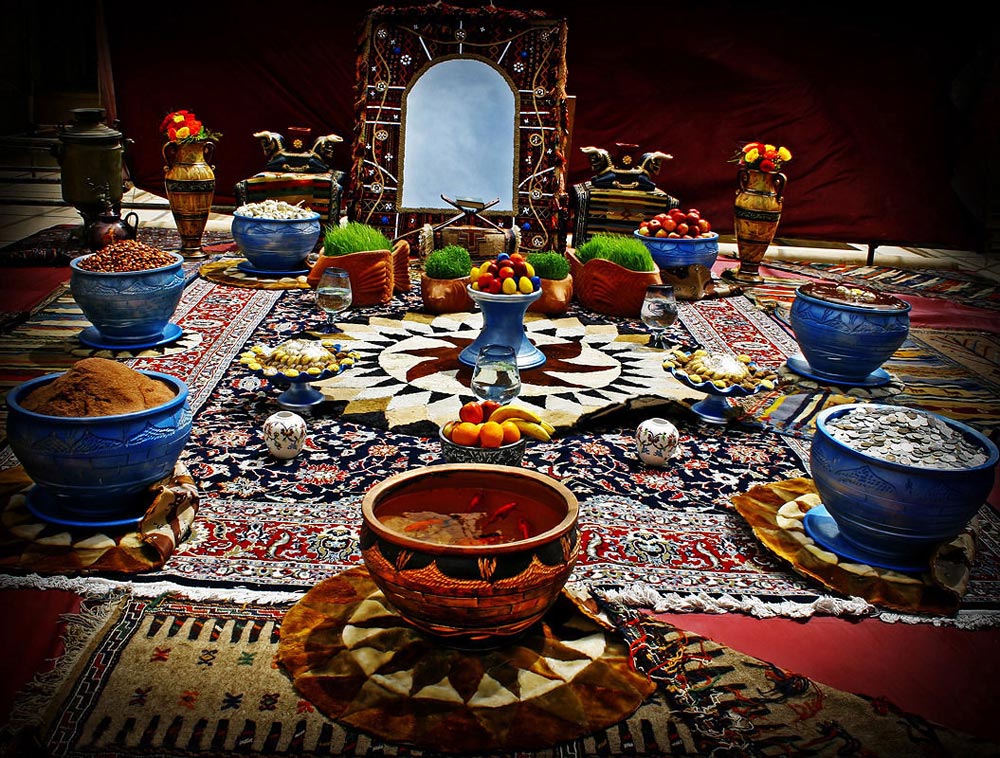For over 3,000 years, Iranians plus over twenty observed ethnic groups from a diverse variety of societies have been celebrating this meaningful New Year’s celebration, happening right on the day of the vernal equinox. Marking the first day of spring, this New Year is in true attunement with the rhythm of life. That being said, it’s not always observed on the same day; it usually occurs sometime between March 20th – 23rd. In Persian, the word Nowruz translates to ‘new day’. Come along with goingIRAN to learn and discover more about this ancient celebration!
This ancient traditional celebration comes from Persian and Zoroastrian roots. Although it is recognized as a secular holiday by Iranians and most other faiths, it is a holy day for Zoroastrians. Through different cultures and faiths the ceremonies of this celebration varies. Nowadays, during the thirteen to fifteen days that children get to enjoy off of school, friends and families alike spend their days visiting one another’s homes. Traditionally, if you’re not on vacation you and your house must be ready for guests to arrive with a very short notice. Sometimes you will not even get a twenty minute heads up, so everything must always be in order! This phenomenon is called Eid Didani. In Persian, Eid Didani means ‘holiday visitations’. During these times, parents and children put on their crisp new clothes and go to visit loved ones on Nowruz CELEBRATION . It is not uncommon for families to visit two or even three other families and friends in the same day. It’s also customary for elders to give money as a gift to their children.
If you are familiar with the Iranian culture, you can see why it can get a bit hectic trying to go grocery shopping around this time! During the first few days of this holiday the markets are absolutely brimming with people; buying more fruits and confectionaries than you’ve ever seen in your life, guaranteed!
What is Sofreye Haft-seen on Nowruz
In modern day Iran, households begin the preparation of a Sofreye Haft-seen about a week before Nowruz. Sofreye Haft-seen is a symbolic placement of seven items, usually on their own separate and elaborately decorated table. Seen is the letter representing the ‘s’ sound in Persian. It is important to note that the ancient meanings of these symbols are a bit different and revert back to Zoroastrian origins. Although the main items have remained the same, the symbolisms behind them have become much simpler and are often debated over. So, the seven modern ‘seen’ items through a general consensus are as follows:
- Senjed, known as the ‘Persian Olive’ this sweet powdery fruit symbolizes fertility
- Seeb, apples symbolize beauty and love
- Sabzeh, a dish of barley or wheat sprouts symbolizing exuberance and rebirth
- Samanu, a sweet wheat-germ pudding symbolizing wealth, strength and abundance
- Seer, a whole head of garlic symbolizing physical and mental health and vitality
- Serkeh, symbolizes the acceptance and endurance of hardships
- Somagh, known as ‘Sumac’ it is a dried red fruit (powder) symbolizing patience and the sunrise (turning of the day)
In addition to these items, it is also very customary to see a mirror (clarity), coins (wealth), candles (enlightenment), esfand (protection against jealousy/evil), painted eggs (childbearing) and goldfish (happiness, birth, freshness). While in Iran, you may find yourself in a home that has some other items on display in their Sofre Haft-seen. See if you can point them out as they will be more than happy to explain their personal/traditional symbolisms behind them!
Sizdah Be-Dar (traditional Iranian Nature festival)
The Sofre Haft-seen stays in the Nowruz celebrators homes until the thirteen-day holiday has come to an end. On the thirteenth day, it is also customary for families to go on picnics and throw their sabzeh into running water, to ‘expel the cursed thirteen’ or in Persian, Sizdah Be-Dar. This is a very fun time to be in Iran, as many of the locals are on vacation and a magnificent Nowruz energy is in the air!
Recommended Reds | chaharshanbeh soori (magnificent festival of fire)
Recommended Reads | Internet Access in Iran


